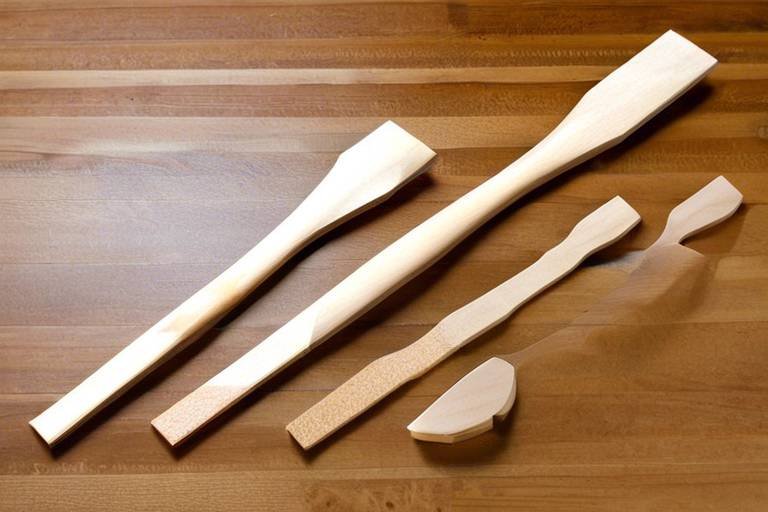5 Rustic Wooden Shelf Designs You Can DIY
Are you ready to infuse your home with some rustic charm? Rustic wooden shelves are the perfect way to showcase your personality while providing practical storage solutions. Whether you’re a seasoned DIYer or just starting out, these five unique designs are not only easy to create but also allow you to express your creativity and style. Imagine transforming your living space with shelves that reflect the warmth of natural wood and the beauty of handcrafted design. With a little bit of effort, you can create stunning pieces that serve as both functional and decorative elements in your home. Let's dive into these exciting projects that promise to add character to any room!
First up, we have the Classic Floating Shelf. This design is a timeless choice that seamlessly blends into any decor style. Floating shelves are perfect for displaying your favorite decorative items, books, or even plants. The beauty of this design lies in its simplicity and elegance. You can customize the size and finish to match your room’s aesthetic. Imagine a sleek, minimalist shelf holding a few cherished knick-knacks or a stack of beautifully bound books. It’s both functional and visually appealing, making it a must-have for any home.
Next, let’s explore the Ladder Shelf. This trendy design not only adds vertical interest to your space but also serves as a stylish way to display books, plants, and other decorative items. A ladder shelf can be placed against a wall or used as a room divider, making it a versatile addition to your home. It’s like having a piece of art that’s also practical! The open design allows for airflow and light, creating a cozy atmosphere. Plus, it’s an excellent way to utilize those awkward corners in your home.
Before diving into the construction, it’s essential to gather all the necessary materials. Here’s a quick overview:
- Wood planks (choose your desired width and length)
- Wood screws
- Wood glue
- Sandpaper
- Paint or stain (optional for finishing)
When selecting wood for your ladder shelf, consider durability and aesthetics. Popular choices include pine, oak, and reclaimed wood. Each type brings its unique character to the shelf. For instance, pine is lightweight and easy to work with, while oak offers sturdiness and a beautiful grain. Reclaimed wood adds a rustic touch and is environmentally friendly. Choose the one that resonates with your style!
Having the right tools will make your DIY experience smoother. Here’s what you’ll need:
- Drill
- Saw (hand saw or power saw)
- Level
- Measuring tape
- Clamps
Now that you have your materials and tools ready, let’s break down the assembly process:
- Cut your wood to the desired lengths for the shelves and supports.
- Sand the edges to ensure a smooth finish.
- Attach the supports to the wall using a level to ensure they are straight.
- Secure the shelves onto the supports with screws and wood glue for added stability.
- Finish with paint or stain if desired, and let it dry completely.
Uncover the charm of the Crate Shelf, a delightful option that combines rustic aesthetics with functionality. This design allows you to organize items while adding a touch of farmhouse style to any room. Wooden crates are not only affordable but also versatile. You can stack them, hang them, or arrange them in various configurations to suit your space. Imagine a wall adorned with colorful crates filled with plants, books, or even your favorite collectibles!
Finding the perfect wooden crates is key to your project. Check out local thrift stores, flea markets, or online marketplaces for affordable options. You might even have old crates lying around that just need a little TLC!
When assembling your crate shelf, consider the following tips:
- Ensure the crates are securely fastened together for stability.
- Mix and match different sizes for a unique look.
- Consider painting or staining the crates to match your decor.
Transform that unused corner in your home into a stylish display area with a Corner Shelf. This design maximizes space while providing a unique way to showcase your favorite items. A corner shelf can serve as a statement piece, drawing attention to an often-overlooked area. It’s like giving a shy corner a chance to shine!
When creating a corner shelf, keep in mind the dimensions of your space and the height of the shelf. You want it to be functional yet aesthetically pleasing. Consider adding decorative brackets for a touch of flair!
Proper installation is crucial for stability. Use wall anchors if you're mounting the shelf on drywall to ensure it can hold weight without sagging. Follow the manufacturer’s instructions for any brackets or supports you use.
Finally, let’s delve into the Rustic Wall-Mounted Shelf. This design combines rustic charm with practicality, making it perfect for small spaces. It can hold everything from spices in the kitchen to books in the living room. The beauty of a wall-mounted shelf is its ability to adapt to any decor style while saving floor space. Think of it as a canvas where you can display your artistic side!
Get creative with various design variations for wall-mounted shelves. Consider different shapes, sizes, and finishes. You could go for a more industrial look with metal brackets or stick to a classic wooden finish for a warm feel. The options are endless!
Don’t forget about the finishing touches! Proper finishing will not only protect the wood but also enhance its beauty. You can opt for a natural finish to showcase the wood grain or a bold color to make a statement. Whatever you choose, ensure it complements your overall decor.
Q: What type of wood is best for DIY shelves?
A: The best types of wood depend on your desired look and durability. Common choices include pine, oak, and plywood, each offering unique characteristics.
Q: How do I ensure my shelves are secure?
A: Use proper mounting techniques, such as wall anchors for drywall and ensure that all screws and brackets are tightly fastened.
Q: Can I customize the size of my shelves?
A: Absolutely! One of the best parts of DIY projects is the ability to customize dimensions to fit your space perfectly.
Q: How can I finish my shelves?
A: You can stain, paint, or apply a clear sealant to enhance the wood's appearance and protect it from wear.

Design 1: The Classic Floating Shelf
Discover how to create a timeless floating shelf that combines simplicity with elegance. This design is perfect for showcasing decorative items and can be customized to fit any room's aesthetic. Imagine walking into your living room and being greeted by a beautifully crafted shelf that not only holds your favorite books but also serves as a stunning focal point. The beauty of a floating shelf lies in its ability to give the illusion of more space while adding a touch of sophistication to your decor.
To start your project, you'll need to gather some essential materials. The beauty of this DIY is that you can choose wood that matches your existing furniture or go for something contrasting to create a striking visual effect. Common choices include pine, oak, or even reclaimed wood for that rustic charm. You can also opt for a finish that complements your home, whether it’s a natural stain, a bold paint color, or a weathered look.
Here’s a quick overview of the materials you’ll need:
| Material | Description |
|---|---|
| Wood | Select planks that suit your style; thickness depends on the weight you plan to support. |
| Brackets | Choose sturdy brackets that can support the shelf's weight; hidden brackets create a seamless look. |
| Wood Glue | For added stability, especially if using multiple pieces of wood. |
| Finish | Stain or paint to protect the wood and enhance its appearance. |
Once you have your materials ready, it’s time to dive into the assembly process. Start by measuring the space where you want to install your shelf. This step is crucial because you want it to be not just functional but also aesthetically pleasing. Mark the wall with a level to ensure your shelf will be straight. Then, cut your wood to the desired length and apply your chosen finish. Allow it to dry completely before moving on.
Next, attach the brackets to the wall. This part can be a bit tricky, so make sure to use a stud finder to locate the best spots for mounting. Secure the brackets tightly, as they will bear the weight of your shelf. Once the brackets are in place, gently slide your shelf onto them. Voila! You now have a stunning floating shelf that will elevate your space.
Don’t forget to style your new shelf! Use decorative items like plants, books, or framed photos to bring personality to your space. Remember, less is often more; a few well-placed items can create a more impactful display than overcrowding the shelf.
In conclusion, the classic floating shelf is not just a storage solution; it’s a way to express your style and creativity. With just a few materials and some time, you can transform a simple piece of wood into a functional art piece that enhances your home. So, roll up your sleeves and get ready to impress your friends and family with your DIY skills!
Q: How much weight can a floating shelf hold?
A: The weight capacity of a floating shelf depends on the materials used and how well it’s installed. Generally, a well-mounted floating shelf can hold up to 50 pounds or more.
Q: Can I install a floating shelf on drywall?
A: Yes, but it’s best to anchor it into a stud for maximum support. If you can’t find a stud, use heavy-duty wall anchors.
Q: What type of wood is best for floating shelves?
A: Popular choices include pine, oak, and plywood. Each type has its own aesthetic and durability, so choose what fits your style and needs.
Q: How do I clean my floating shelf?
A: Simply dust it regularly and use a damp cloth for any spills. Avoid harsh chemicals that can damage the finish.

Design 2: The Ladder Shelf
Are you ready to elevate your home decor with a touch of creativity? The ladder shelf is not just a functional piece; it’s a statement of style that can transform any room into a cozy haven. This design is perfect for those who want to add vertical interest, making it an ideal choice for displaying an array of items, from your favorite books to beautiful potted plants. Imagine walking into a room where your belongings are not just stored but beautifully showcased, capturing the eye of every guest. Sounds appealing, right?
Creating a ladder shelf is not only a fun DIY project but also a fantastic way to personalize your space. You can customize it to match your existing decor, whether it’s rustic, modern, or somewhere in between. Plus, it’s a great conversation starter! Now, let’s dive into how you can bring this project to life.
Before you start hammering away, it’s essential to gather all the materials you’ll need for your ladder shelf. Here’s a quick overview:
- Wood Boards: Choose sturdy wood, such as pine or oak, for the shelves.
- Wood Glue: This will help keep your structure strong and stable.
- Wood Screws: Use screws to secure the shelves in place.
- Sandpaper: For a smooth finish, you’ll want to sand down the edges and surfaces.
- Paint or Stain: Personalize your shelf with a color or finish that complements your decor.
When it comes to wood selection, you have a few options. Pine is a popular choice due to its affordability and ease of use, while oak offers durability and a more refined look. If you're feeling adventurous, reclaimed wood can add a unique character to your ladder shelf, telling a story with its imperfections. Remember, the wood you choose will not only affect the look but also the longevity of your shelf, so pick wisely!
Having the right tools on hand will make your DIY experience much smoother. Here’s a list of essential tools you’ll need:
- Drill: For making holes and securing screws.
- Saw: A circular saw or hand saw will work for cutting your wood to size.
- Measuring Tape: Accurate measurements are key to a successful project.
- Level: To ensure your shelves are straight and even.
- Paintbrush: For applying your chosen finish.
Now that you have your materials and tools ready, it’s time to assemble your ladder shelf! Follow these steps:
- Measure and Cut: Start by measuring the desired height and width of your ladder shelf. Cut the wood boards to your specifications.
- Sand the Edges: Smooth out any rough edges with sandpaper to prevent splinters and ensure a polished look.
- Assemble the Frame: Using wood screws, attach the two side pieces to the bottom base. This will create the ladder’s structure.
- Add the Shelves: Secure the shelves at your preferred heights using wood glue and screws for additional stability.
- Finish It Off: Apply your chosen paint or stain to enhance the beauty of the wood and protect it.
And voila! You have a stunning ladder shelf that not only serves a purpose but also enhances the aesthetic of your space. It’s a perfect blend of practicality and style, making it a fantastic addition to any room.
Q: How much weight can a ladder shelf hold?
A: This depends on the type of wood used and how well it’s constructed. Generally, a well-built ladder shelf can hold anywhere from 20 to 50 pounds per shelf.
Q: Can I customize the size of my ladder shelf?
A: Absolutely! You can adjust the dimensions to fit your space and needs. Just remember to maintain stability by ensuring the ladder is proportionate.
Q: What is the best finish for my ladder shelf?
A: It depends on your style! If you want a rustic look, a clear wood finish or stain works great. For a modern touch, consider a bold paint color.
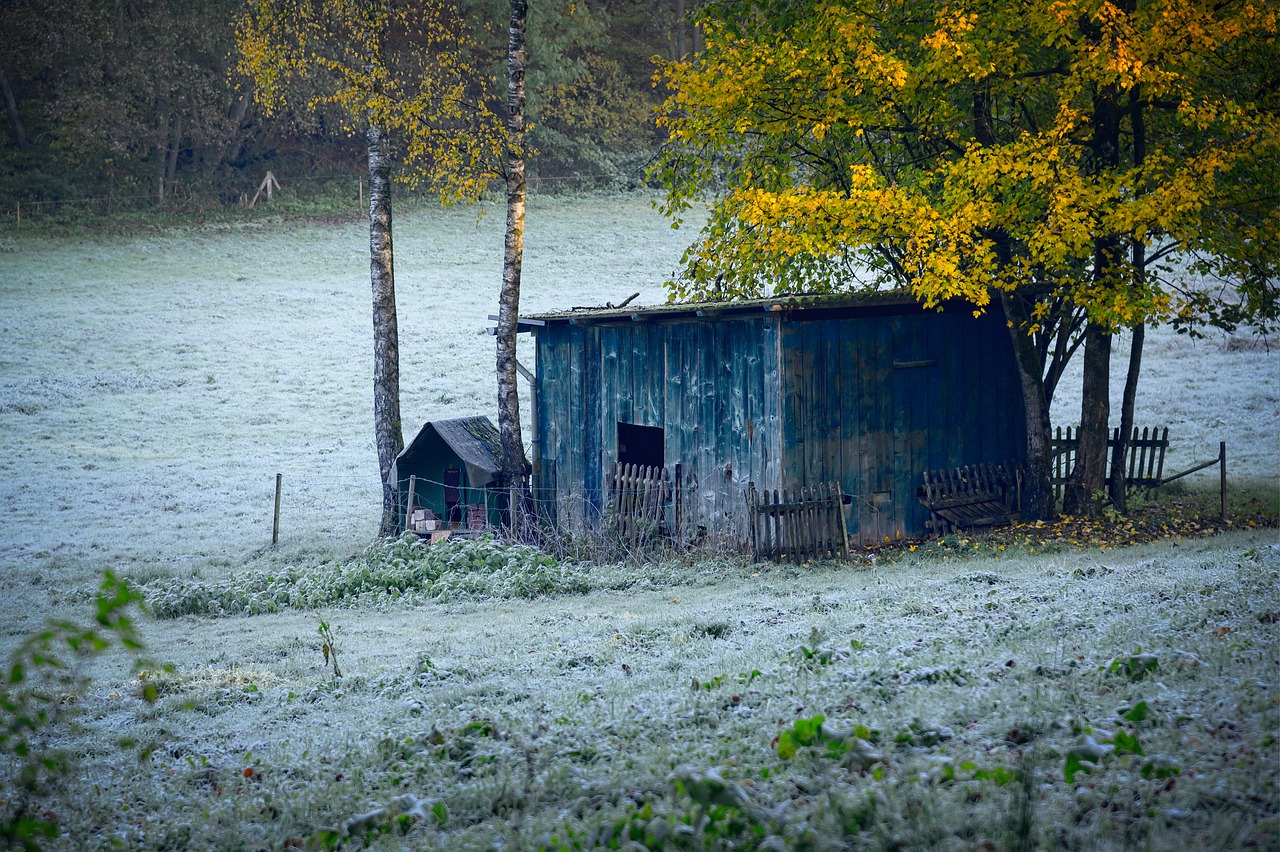
Materials Needed
Before diving into the exciting world of DIY ladder shelves, it’s essential to gather all the materials you'll need. Having everything on hand not only streamlines the process but also allows you to focus on building rather than running back and forth to the store. Here’s a comprehensive list of the materials you'll require:
- Wood Boards: Choose sturdy boards for the shelves. Pine, oak, or plywood are excellent choices due to their durability and aesthetic appeal.
- Wood Glue: A strong adhesive will help bond the pieces together, providing extra stability.
- Wood Screws: These are necessary for securing the shelves to the side supports. Opt for screws that are appropriate for the thickness of your wood.
- Sandpaper: To ensure a smooth finish, sandpaper is crucial. A finer grit will help you achieve that polished look.
- Wood Finish or Paint: This is optional, but applying a finish or paint can enhance the wood’s natural beauty and protect it from wear.
In addition to the materials, having the right tools at your disposal will make the project go smoothly. Here’s a quick overview of the tools you’ll need:
| Tool | Purpose |
|---|---|
| Drill | For creating holes for screws and assembling the shelf. |
| Saw | To cut wood to the desired lengths. |
| Measuring Tape | To ensure accurate measurements for your shelves and supports. |
| Level | To make sure your shelves are perfectly horizontal. |
| Clamps | To hold pieces together while the glue dries. |
By gathering these materials and tools beforehand, you’ll be setting yourself up for a successful DIY project. Remember, the key to a stunning ladder shelf lies not just in the materials you choose but also in the care and attention you apply during the building process. So, let’s get started and bring that rustic charm into your space!
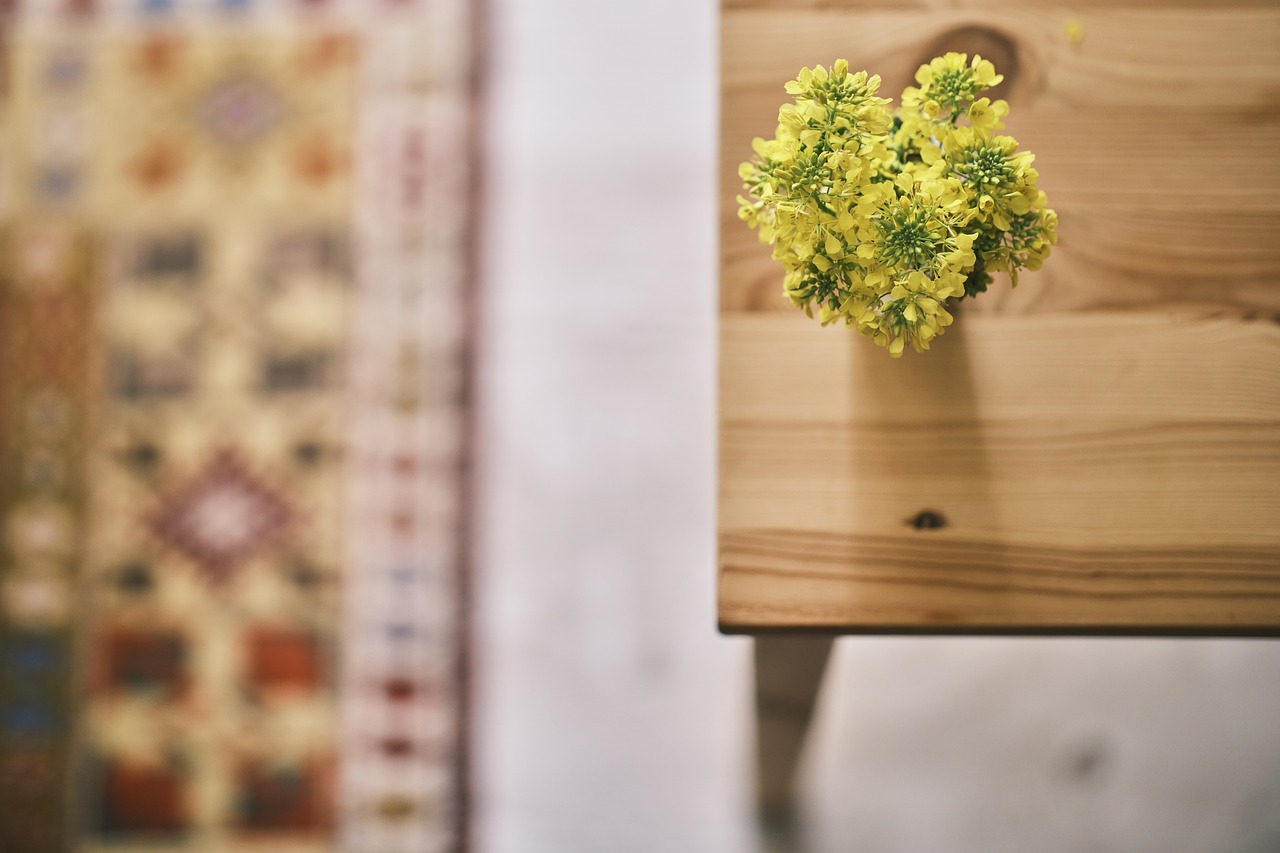
Wood Selection
When it comes to building your DIY ladder shelf, the type of wood you choose can make all the difference. Not only does the right wood enhance the overall aesthetic of your project, but it also contributes to the durability and functionality of the shelf. So, let’s dive into the best options available to you.
First off, consider pine. It's a popular choice for DIY projects due to its affordability and ease of work. Pine has a light color that can brighten up any room, and it takes stain and paint well, allowing for customization. On the downside, it's softer than other woods, which means it can dent or scratch more easily. But if you're looking for a budget-friendly option, pine is hard to beat.
Next up is oak, a classic choice known for its strength and durability. Oak has a beautiful grain that adds character to your shelf, making it perfect for those who want a rustic look. It’s a bit pricier, but its longevity is well worth the investment. Just imagine how stunning a ladder shelf made from oak would look, showcasing your favorite plants or books!
If you're leaning towards something with a bit more flair, consider walnut. This wood is rich in color and has a luxurious feel that can elevate any space. Walnut is also incredibly sturdy, making it suitable for heavier items. However, it does come with a higher price tag, so it's best used for special projects or if you're looking to make a statement.
Lastly, don’t overlook plywood. It’s an excellent option if you're looking for a cost-effective solution while still needing strength. Plywood comes in various grades, and higher-quality options can look surprisingly attractive when finished. It’s versatile and can be cut into various shapes and sizes, making it perfect for custom projects.
Here's a quick comparison table to summarize the wood options:
| Type of Wood | Durability | Cost | Best For |
|---|---|---|---|
| Pine | Moderate | Low | Budget-friendly projects |
| Oak | High | Medium | Durable, rustic designs |
| Walnut | Very High | High | Luxury, statement pieces |
| Plywood | Moderate | Low to Medium | Custom shapes and sizes |
In conclusion, selecting the right wood for your ladder shelf project is crucial. Each type offers its unique benefits and aesthetics, so think about what will best suit your style and needs. Whether you go for the affordability of pine, the elegance of walnut, or the versatility of plywood, your DIY ladder shelf is sure to be a stunning addition to your home!

Tools Required
When embarking on your DIY ladder shelf project, it’s essential to have the right tools at your disposal. Having the appropriate equipment not only makes the process smoother but also ensures that your shelf is built to last. Here’s a rundown of the **tools** you’ll need:
- Measuring Tape: This is crucial for ensuring precise measurements, helping you avoid any miscalculations that could impact the final look of your shelf.
- Level: A level is indispensable for making sure your shelf is straight. An uneven shelf can be frustrating and may lead to items sliding off.
- Drill: A power drill will be needed for creating holes and driving screws. It’s much faster than using a manual screwdriver, saving you time and effort.
- Saw: Depending on the wood you choose, a circular saw or a hand saw will be necessary for cutting your wood to the desired lengths.
- Screwdriver: A good screwdriver is essential for securing your shelf to the wall and ensuring stability.
- Sandpaper: Sandpaper will help you smooth the edges of your wood, giving your shelf a polished and professional finish.
- Paintbrush or Roller: If you decide to paint or stain your shelf, a quality brush or roller will help you achieve an even coat.
These tools may seem like a lot at first glance, but each one plays a vital role in the construction of your ladder shelf. Think of it like cooking—you wouldn’t want to bake a cake without measuring cups or an oven, right? Similarly, having the right tools will make your DIY experience enjoyable and successful.
Once you've gathered your tools, you’ll feel a sense of excitement as you prepare to bring your rustic vision to life. Imagine the satisfaction of stepping back to admire your handiwork, knowing that you built something beautiful with your own hands. So, gear up and get ready to create a stunning ladder shelf that will enhance your space and showcase your unique style!
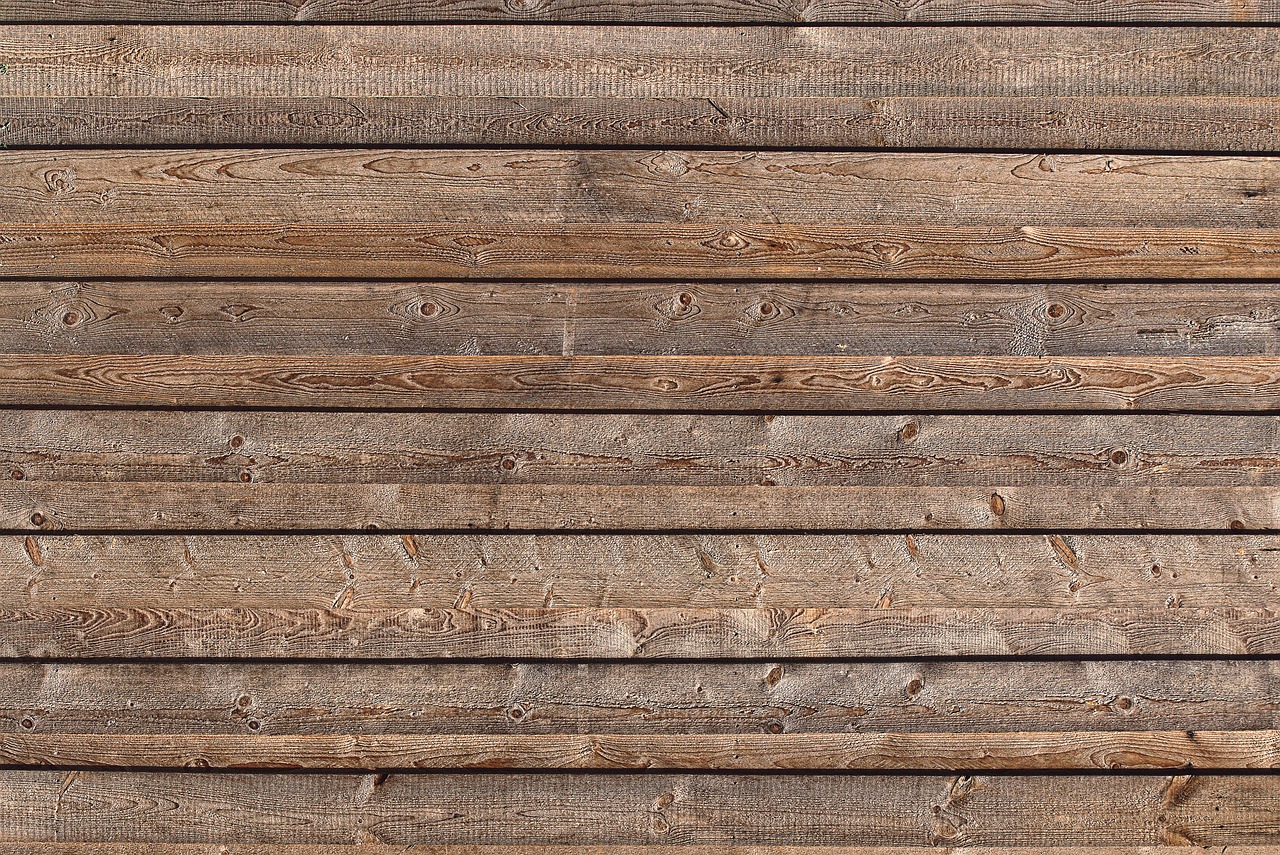
Assembly Steps
Building your very own ladder shelf is not only a rewarding experience but also a fantastic way to showcase your creativity. To get started, you’ll want to gather all your materials and tools in one place. This will save you time and keep you focused on the project at hand. Here’s a step-by-step guide to help you assemble your ladder shelf efficiently:
Step 1: Prepare the Wood
Begin by cutting your wood pieces to the desired lengths. Typically, you will need two vertical pieces for the sides and several horizontal pieces for the shelves. Make sure to sand the edges and surfaces to create a smooth finish, which not only looks better but also prevents splinters.
Step 2: Assemble the Frame
Next, take the two vertical pieces and attach the horizontal shelves. Use wood glue for a strong bond, and reinforce the joints with screws for added stability. Ensure that each shelf is level; you can use a level tool to check this. A quick tip is to pre-drill holes to avoid splitting the wood when inserting screws.
Step 3: Secure the Structure
Once the frame is assembled, it’s time to secure the structure. You can add diagonal braces for extra support, especially if you plan to place heavy items on the shelves. These braces can be made from scrap wood, cut to size, and attached at a 45-degree angle between the vertical and horizontal pieces.
Step 4: Finishing Touches
After the assembly, it’s time to add your personal touch. You might want to stain or paint your shelf to match your home decor. A natural wood finish can enhance the rustic charm, while a splash of color can add a modern twist. Remember to apply a protective sealant to ensure durability.
Step 5: Mounting Your Shelf
Finally, decide where you want to place your ladder shelf. If you’re mounting it to the wall, use appropriate wall anchors and screws to ensure it’s securely attached. If it’s a freestanding shelf, make sure it’s placed in a stable position. Always double-check its stability before adding items to it.
By following these steps, you can create a stunning ladder shelf that not only serves a functional purpose but also enhances the aesthetic appeal of your space. Remember, the beauty of DIY projects lies in the personal touch you bring to them!
Q1: What type of wood is best for a ladder shelf?
A1: The best types of wood for ladder shelves are hardwoods like oak or maple, as they offer durability and a beautiful finish. However, softwoods like pine can also work well and are often more budget-friendly.
Q2: How much weight can a ladder shelf hold?
A2: The weight capacity of a ladder shelf depends on its construction and materials. On average, a well-constructed ladder shelf can hold between 50 to 100 pounds, but it’s always best to check the specific design and materials used.
Q3: Can I customize the size of my ladder shelf?
A3: Absolutely! One of the best parts of DIY projects is that you can customize the size to fit your space perfectly. Just be sure to adjust the lengths of your wood pieces accordingly.

Design 3: The Crate Shelf
Uncover the charm of a crate shelf, which offers a rustic yet functional storage solution. This design is perfect for organizing items while adding a touch of farmhouse style to any room. Imagine walking into your living space and being greeted by a beautifully crafted shelf that not only holds your favorite books but also showcases your treasured knick-knacks. The crate shelf is versatile, allowing you to customize it according to your personal taste and the overall decor of your home.
When it comes to creating a crate shelf, the first step is sourcing the right materials. Wooden crates can be found at various places, from local craft stores to online marketplaces. You might even consider visiting thrift shops or flea markets, where you can find unique and vintage crates that tell their own story. The beauty of using crates lies in their natural imperfections, which add character and charm to your shelf. Plus, they are often affordable, making this project budget-friendly!
So, where can you find these amazing wooden crates for your shelf project? Here’s a quick guide:
- Local Craft Stores: Check out stores that specialize in DIY supplies.
- Online Marketplaces: Websites like Amazon and Etsy often have a variety of crates available.
- Thrift Shops: Don’t underestimate the treasures you can find in second-hand stores.
- Flea Markets: These markets can be goldmines for vintage and rustic finds.
Once you have your crates, the next step is to assemble them into a cohesive shelf. This is where your creativity can really shine! You can stack the crates in a traditional vertical manner, or you might choose to arrange them in a more eclectic, asymmetrical style. The choice is yours, and it’s all about what suits your space best. Consider painting or staining the crates to match your existing decor, or leave them in their natural state for a more rustic feel.
Assembling your crate shelf effectively is crucial to ensuring it's both sturdy and visually appealing. Here are a few tips to keep in mind:
- Use Wood Glue: For added stability, apply wood glue between the crates before securing them together.
- Secure with Screws: Use screws to attach the crates together. This will provide a strong hold and prevent them from shifting.
- Level It Out: Make sure your shelf is level before securing it to the wall. A crooked shelf can be an eyesore!
Finally, once your crate shelf is assembled and securely mounted, you can begin decorating it. Fill it with your favorite books, vibrant plants, or even decorative boxes to keep smaller items organized. The rustic look of the crates combined with your personal touches will create a stunning focal point in any room.
Q: How many crates do I need to create a shelf?
A: The number of crates depends on the size of the shelf you want. Typically, 3-5 crates can create a nice, balanced look.
Q: Can I use painted crates?
A: Absolutely! Painted crates can add a pop of color and personality to your shelf. Just ensure the paint is suitable for wood surfaces.
Q: What is the best way to secure the shelf to the wall?
A: Use wall anchors and screws for a secure installation. Make sure to locate the studs in your wall for maximum support.

Crate Sourcing
When it comes to creating a stunning crate shelf, sourcing the right crates is crucial. Not only do they need to be visually appealing, but they should also be sturdy enough to hold your cherished items. You might be wondering where to find these rustic gems. Well, fear not! There are several fantastic places to look that can save you both time and money.
First off, consider checking out your local thrift stores or flea markets. These spots often have a variety of wooden crates available at affordable prices. Plus, each crate has its own unique character, which can add a personal touch to your shelf design. You can also explore online marketplaces like Craigslist or Facebook Marketplace, where people often sell vintage crates for a fraction of their original cost. Just be sure to inspect the crates for any signs of damage or wear before making a purchase.
If you're feeling adventurous, you might even think about visiting local farms or wineries. Many of these places use wooden crates for transporting their products and may be willing to sell or give away their used crates. Not only will you be supporting local businesses, but you'll also be getting your hands on some truly authentic rustic materials.
Another option is to check out home improvement stores or craft stores, which sometimes carry new wooden crates designed for DIY projects. While these may not have the same vintage charm as reclaimed crates, they can still provide a solid base for your shelf. Just remember, when sourcing crates, look for ones that are the right size for your space and have a sturdy construction to ensure they can bear the weight of your items.
In summary, sourcing the right crates for your DIY project can be an enjoyable treasure hunt. Here’s a quick recap of the best places to find them:
- Thrift stores and flea markets
- Online marketplaces (Craigslist, Facebook Marketplace)
- Local farms and wineries
- Home improvement and craft stores
With a little effort and creativity, you can find the perfect crates that will not only meet your functional needs but also enhance the overall aesthetic of your rustic wooden shelf. Happy hunting!

Assembly Tips
When it comes to assembling your crate shelf, there are a few essential tips that can make the process smoother and more enjoyable. First and foremost, ensure that you have a clear workspace. A clutter-free area will help you focus on the task at hand and minimize distractions. Additionally, having all your materials organized and within reach can save you a lot of time during the assembly process.
Next, consider the layout of your crates before you start assembling them. Play around with different arrangements to see what looks best. You might want to stack the crates vertically, horizontally, or even in a staggered pattern. This not only adds visual interest but also allows you to customize the shelf to suit your personal style and the specific items you plan to display.
One of the most important aspects of assembly is ensuring that your crates are securely fastened together. Use a strong wood glue for a solid bond, and reinforce the joints with screws for added stability. Make sure to pre-drill holes to avoid splitting the wood, especially if you’re using reclaimed crates that may be more brittle. This simple step can save you from a lot of frustration down the line.
While assembling, take your time to double-check the level of each shelf. A crooked shelf can be an eyesore and may cause items to slide off. Use a level tool to ensure that everything is perfectly aligned. If you find that your surface isn’t level, you can adjust the height of the legs or add small shims to correct any discrepancies.
Finally, once your shelf is assembled, don’t rush the finishing process. Applying a protective coat of varnish or stain not only enhances the natural beauty of the wood but also protects it from wear and tear. Consider using a food-safe finish if you plan to use your shelf in the kitchen or dining area. This attention to detail will ensure your crate shelf remains a stunning focal point in your home for years to come.
- What type of wood is best for a crate shelf? For a crate shelf, consider using hardwoods like oak or maple for durability, or pine for a more rustic look.
- How do I ensure my shelf is stable? Make sure to use strong joinery techniques, such as screws and wood glue, and check that each shelf is level during assembly.
- Can I customize the size of my crate shelf? Absolutely! You can adjust the dimensions of the crates or the spacing between them to fit your space perfectly.
- What finish should I use on my shelf? A clear varnish or wood stain will enhance the wood's natural beauty while providing protection. Choose a finish that complements your home's decor.

Design 4: The Corner Shelf
Transforming an unused corner into a stylish display area with a corner shelf is not only a creative solution but also a practical one. Corners often go overlooked in home design, yet they hold immense potential for adding character and functionality to your space. Imagine a beautifully crafted shelf that showcases your favorite books, plants, or decorative items, all while making the most of that awkward space that usually collects dust. Sounds appealing, right? Let's dive into how you can achieve this!
When designing your corner shelf, there are several considerations to keep in mind. First, think about the overall style of your room. Are you going for a modern look, or do you prefer a more rustic feel? The materials you choose should reflect this aesthetic. For instance, reclaimed wood can add a warm, farmhouse touch, while sleek metal brackets can give a more contemporary vibe. Additionally, consider the height and width of your shelf. You want it to be functional without overwhelming the space. A well-placed corner shelf can draw the eye and become a focal point of the room.
Next, let’s talk about installation techniques. Proper installation is crucial for ensuring that your corner shelf is stable and safe. Here are some essential tips:
- Wall Studs: Always locate and secure your shelf to wall studs for maximum support.
- Leveling: Use a level to ensure your shelf is perfectly horizontal; a crooked shelf can be an eyesore.
- Brackets: Choose sturdy brackets that can handle the weight of the items you plan to display.
Finally, don’t forget about the finishing touches! A well-finished shelf not only enhances the wood's natural beauty but also protects it from wear and tear. Consider staining or painting your shelf to match your existing decor. A coat of sealant can also help preserve the wood and keep it looking fresh for years to come. With a little creativity and effort, your corner shelf can become a stunning addition to your home.

Design Considerations
When embarking on the journey of creating a corner shelf, there are several that can significantly impact both functionality and aesthetics. First and foremost, think about the dimensions of your space. Measure the corner area where you plan to install the shelf to ensure that it fits perfectly without overwhelming the room. A well-proportioned shelf can transform a neglected corner into a stunning focal point.
Another key factor is the style of your corner shelf. Consider the overall decor of the room. Are you aiming for a cozy farmhouse vibe, or perhaps a sleek modern look? The materials you choose should complement your existing furniture and decor. For example, reclaimed wood can add a rustic charm, while polished metal brackets can lend a contemporary edge.
Don't forget about weight distribution. Since corner shelves can sometimes bear more weight on one side, it's essential to design them with stability in mind. Ensure that the shelf is anchored securely to the wall, and consider using brackets or supports that can handle the load of the items you plan to display.
Additionally, think about the accessibility of the shelf. If it’s too high or too deep, it may become impractical for daily use. Aim for a height that allows you to easily reach and arrange your items without straining. When planning the layout, visualize how you want to style the shelf. A mix of books, plants, and decorative pieces can create a visually appealing display, but be cautious not to overcrowd the space, which can lead to a cluttered look.
Lastly, consider the lighting in the area. Natural light can enhance the beauty of your shelf, while ambient lighting can create a warm atmosphere. If your corner shelf is in a dimly lit area, think about incorporating LED strip lights or small sconces to highlight your favorite items.
In summary, the design considerations for a corner shelf revolve around the balance of style, functionality, and practicality. By taking the time to evaluate these elements, you can create a stunning piece that not only looks great but also serves its purpose effectively.
- What materials are best for building a corner shelf? It's best to use sturdy materials like hardwood, plywood, or MDF for durability. If you're going for a rustic look, reclaimed wood can also be a great choice.
- How do I ensure my corner shelf is stable? Make sure to anchor the shelf securely to the wall using appropriate brackets and screws. Check the weight limit of your materials to prevent sagging or collapse.
- Can I customize the size of my corner shelf? Absolutely! Measure your corner space and adjust the dimensions of your shelf accordingly. Customizing allows you to make the most of your available space.
- How can I style my corner shelf? Mix different types of items like books, plants, and decorative pieces. Use varying heights and textures to create visual interest without overcrowding the space.

Installation Techniques
When it comes to installing your corner shelf, the right techniques can make all the difference between a sturdy, functional piece and a wobbly disaster. First, you'll want to ensure that you have a solid understanding of your wall type—whether it's drywall, plaster, or brick—because this will dictate the kind of anchors and screws you will need. For drywall, using toggle bolts can provide extra support, whereas masonry screws are essential for brick walls. The last thing you want is for your beautiful shelf to come crashing down because it wasn’t properly secured!
Next, consider the height at which you want your shelf to sit. It's important to think about both aesthetics and functionality. You might want to measure the height of items you plan to display to ensure they fit comfortably. A good rule of thumb is to place the shelf at eye level for easy access and visibility. To help visualize this, you could use a piece of painter’s tape to mark the desired height on the wall. This simple trick can save you from making unnecessary holes in your wall.
Once you've determined the location, it’s time to prepare for installation. Start by marking the drill points on the wall using a level to ensure your shelf will be straight. This step is crucial; a crooked shelf can ruin the entire look of your space. After marking, drill the holes and insert your anchors. If you’re using a stud finder, this can help you locate the best spots for your screws, offering additional support.
Now, let’s talk about the actual mounting process. It’s often easier to attach the shelf brackets to the shelf itself before securing them to the wall. This way, you can ensure that everything aligns perfectly. Once you have attached the brackets, lift the shelf into position and secure it to the wall using your screws. Be sure to tighten them sufficiently, but avoid over-tightening, which can damage the wood. Finally, step back and admire your handiwork! You’ve just transformed an empty corner into a stylish display area.
In case you’re wondering about the weight capacity of your corner shelf, it’s wise to consider the materials used. Solid wood shelves can typically hold more weight than particleboard. If you're planning to place heavier items, you might want to reinforce the shelf with additional brackets or supports. Remember, safety first!
By following these installation techniques, you can ensure that your corner shelf is not only visually appealing but also safe and functional. Happy DIY-ing!
- What tools do I need for installation?
You'll need a drill, a level, a stud finder, and a screwdriver. Additionally, having a measuring tape and a pencil for marking can be very helpful. - How do I choose the right wall anchors?
Choose wall anchors based on the wall material. For drywall, toggle bolts are great for heavier items, while masonry screws are ideal for brick or concrete walls. - Can I install a corner shelf on my own?
Yes, you can! With the right tools and techniques, installing a corner shelf is a DIY-friendly project that most people can handle alone. - What if my wall is uneven?
If your wall is uneven, you may need to add shims to one side of the shelf to ensure it sits level. This will help prevent items from sliding off.
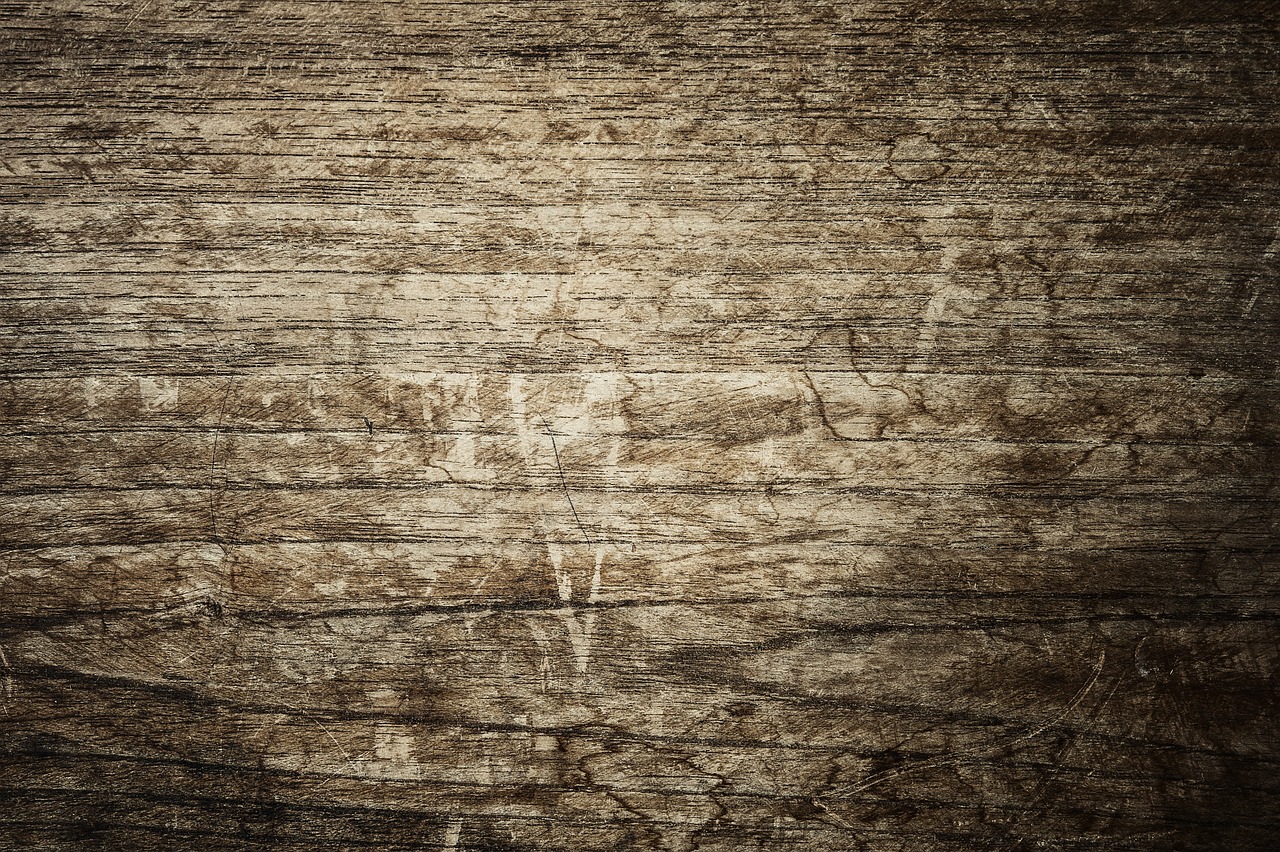
Design 5: The Rustic Wall-Mounted Shelf
Delve into the process of creating a wall-mounted shelf that combines rustic charm with practicality. This design is perfect for small spaces and can be customized to fit any decor style. Imagine transforming a blank wall into a stunning display area that not only showcases your favorite items but also enhances the overall aesthetic of your room. With a few simple materials and tools, you can craft a shelf that reflects your personal style while providing functional storage.
When considering the design of your wall-mounted shelf, think about the dimensions and placement. Do you want it to be a focal point, or should it blend seamlessly with your existing decor? You can choose to go for a single shelf or create a layered effect with multiple shelves. The beauty of a wall-mounted shelf lies in its versatility; you can adjust the height and spacing to suit your needs. For instance, placing shelves at varying heights can create a dynamic display that draws the eye and adds character to your space.
Now, let’s talk about the materials you’ll need for this project. A rustic wall-mounted shelf typically requires:
- Wood boards (like pine or reclaimed wood)
- Brackets for support
- Wood screws
- Sandpaper
- Wood finish (stain or sealant)
Choosing the right wood is essential for achieving that rustic look. Reclaimed wood is a great option, as it comes with character and history. However, if you prefer new wood, opt for boards that have a rough texture to mimic the rustic feel. Regardless of your choice, remember to sand the edges and surfaces to avoid splinters and ensure a smooth finish.
Once you've gathered your materials, it's time to move on to the assembly. Start by measuring and marking where you want your shelf to be mounted. Use a level to ensure that your marks are even, as an uneven shelf can be quite an eyesore. After marking, attach the brackets securely to the wall using wall anchors if necessary. Once the brackets are in place, simply lay the wood board on top and secure it with screws. Voilà! You now have a stunning rustic wall-mounted shelf!
As for the finishing touches, consider adding a stain or sealant to protect the wood and enhance its natural beauty. A dark walnut stain can add depth, while a clear sealant will preserve the wood's original color. Don't forget to accessorize your shelf with decorative items such as plants, books, or family photos to make it uniquely yours.
Here are some common questions that might arise while creating your rustic wall-mounted shelf:
- What type of wood is best for a rustic shelf? - Reclaimed wood is ideal for a rustic look, but pine or cedar can also work well if you prefer new materials.
- How much weight can a wall-mounted shelf hold? - This depends on the type of brackets used and how well they are secured. Generally, a properly installed shelf can hold 20 to 50 pounds.
- Can I paint my shelf instead of staining it? - Absolutely! Painting can also add a unique touch, so feel free to express your creativity.

Design Variations
When it comes to creating a rustic wall-mounted shelf, the beauty lies in the myriad of design variations you can explore. Each variation can reflect your personal style, making your shelf not just a functional piece but a statement of your taste. Here are some exciting ideas to ignite your creativity:
One popular variation is the use of reclaimed wood. This not only adds a unique character to your shelf but also promotes sustainability. Imagine the stories each piece of wood could tell! You can also consider incorporating metal brackets for a more industrial look, which contrasts beautifully with the warmth of the wood.
If you're feeling adventurous, think about adding decorative elements like molding or trim. This can elevate the shelf from simple to stunning. A little bit of crown molding at the top can make your shelf look like a built-in feature of your home. Additionally, you could paint or stain the wood in various colors to match your existing decor. Whether you prefer a deep mahogany or a bright whitewash, the choice is yours!
Another exciting option is to create a multi-tiered shelf. This design variation not only maximizes your storage space but also allows you to display a variety of items at different heights, creating visual interest. You could even mix and match different types of wood for each tier to add depth and dimension.
Lastly, consider integrating lighting into your design. Small LED strip lights can be affixed underneath the shelf to illuminate your displayed items, providing both functionality and ambiance. This simple addition can transform your rustic shelf into a captivating focal point in any room.
As you can see, the design variations for your wall-mounted shelf are limited only by your imagination. Whether you're going for a classic, modern, or eclectic look, these ideas can help you create a piece that is not only beautiful but also uniquely yours.
- What type of wood is best for a rustic wall-mounted shelf?
Hardwoods like oak and walnut are excellent choices for durability and aesthetics, while reclaimed wood adds character.
- How do I ensure my shelf is securely mounted?
Use wall anchors and screws appropriate for your wall type. Always check for studs to provide extra support.
- Can I customize the size of my shelf?
Absolutely! Measure your space and cut the wood to fit your desired dimensions.
- What finishing options are available?
Stains, paints, and sealants can enhance the wood's appearance and protect it from wear.
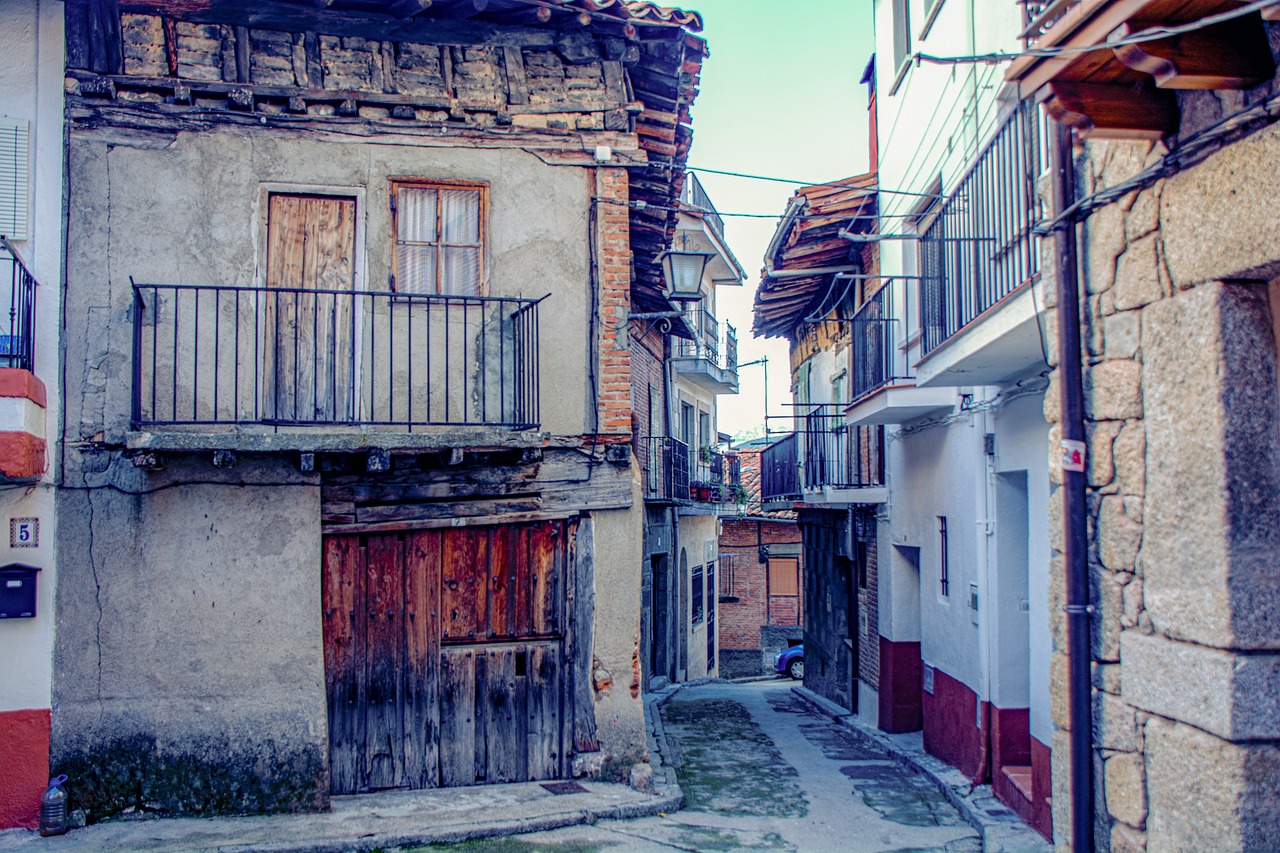
Finishing Touches
When it comes to completing your rustic wall-mounted shelf, the can make all the difference. Think of your shelf as a canvas; the right finish can enhance its beauty and protect it for years to come. So, what are the best options to consider? Let's dive in!
First off, you might want to consider applying a wood stain. This can bring out the natural grain of the wood, adding depth and richness to the overall appearance. Whether you choose a light oak or a deep walnut, the stain will highlight the unique characteristics of your wood, making your shelf a true showpiece. Remember to test the stain on a small, inconspicuous area first to see how it reacts with your specific wood type.
After staining, a protective sealant is essential. This step is crucial for ensuring that your shelf withstands the test of time—think of it as a shield against scratches, spills, and fading. Polyurethane is a popular choice, offering a durable finish that can be either matte or glossy, depending on your preference. If you’re looking for something more eco-friendly, consider using a natural oil finish like tung oil or linseed oil, which not only protects but also nourishes the wood.
Another option to consider is adding decorative elements. Perhaps some brackets or shelf supports that complement the rustic style? These can add both functionality and a bit of flair. You might also think about incorporating some decorative hardware, like vintage knobs or handles, which can enhance the overall aesthetic and provide a personal touch.
Lastly, don't underestimate the power of color. If you’re feeling adventurous, a pop of color can breathe new life into your shelf. Whether it’s a bold hue or a soft pastel, painting your shelf can create a stunning focal point in your room. Just remember to use paint that is compatible with wood and suitable for the environment where your shelf will be placed.
In summary, the finishing touches on your rustic wall-mounted shelf can elevate it from a simple storage solution to a stunning piece of decor. By choosing the right stain, sealant, decorative elements, and possibly a splash of color, you can create a shelf that not only serves a practical purpose but also adds character and charm to your space.
- What type of wood is best for a rustic shelf?
Hardwoods like oak, pine, and cedar are excellent choices due to their durability and natural beauty.
- How long does it take for wood stain to dry?
Typically, wood stain can take anywhere from 1 to 8 hours to dry, depending on the product and environmental conditions.
- Can I use my shelf outdoors?
If you plan to use your shelf outdoors, make sure to use weather-resistant materials and finishes to protect it from the elements.
- How do I maintain my wooden shelf?
Regular dusting and occasional reapplication of sealant will keep your shelf looking great for years to come.
Frequently Asked Questions
- What materials do I need to build a rustic wooden shelf?
To create a rustic wooden shelf, you'll typically need wood (like pine or oak), screws, brackets, and a wood finish. Depending on the design, additional materials such as wood glue or decorative elements may also be required.
- Are these shelf designs suitable for beginners?
Absolutely! Each of the designs mentioned is crafted with beginners in mind. The step-by-step guidance ensures that anyone, regardless of skill level, can successfully complete these projects and enjoy the satisfaction of DIY.
- How can I ensure my shelf is sturdy?
To ensure your shelf is sturdy, use quality materials and follow the assembly instructions carefully. Make sure to secure the shelf to the wall or use proper brackets to support the weight it will hold. Regularly check for any loose screws or wear over time.
- Can I customize the size of the shelves?
Definitely! One of the best parts of DIY projects is that you can customize the size to fit your space perfectly. Just measure your area and adjust the dimensions of the wood accordingly before cutting and assembling.
- What tools do I need for these projects?
Essential tools for building rustic wooden shelves include a saw, drill, level, measuring tape, and sandpaper. Having these tools on hand will make your DIY experience much smoother and more enjoyable.
- How do I finish my shelf for a rustic look?
For a rustic finish, consider using wood stain or a clear sealant to enhance the natural grain of the wood. You can also distress the wood slightly for a more weathered look, or use paint in muted tones to complement your decor.
- Where can I find wooden crates for the crate shelf design?
Wooden crates can often be found at local craft stores, farmers' markets, or even online marketplaces like Etsy or eBay. Upcycling old crates from thrift stores is also a fantastic option for a unique touch!
- Is it safe to install shelves in corners?
Yes, installing shelves in corners can be safe as long as you use proper installation techniques. Make sure to anchor the shelf securely to the wall and use brackets if necessary to support the weight of items you plan to display.






